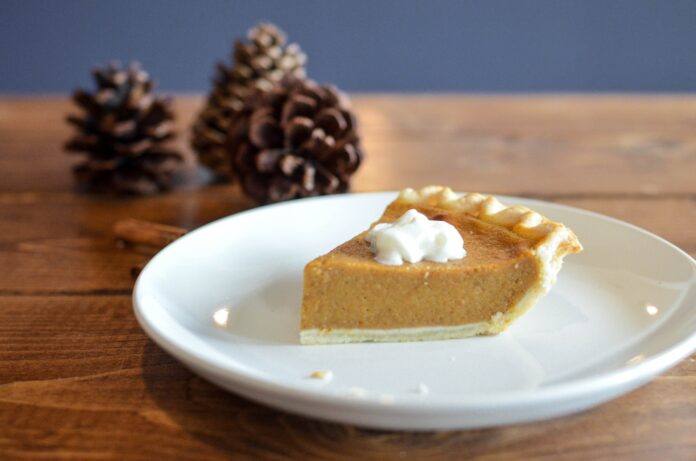MONTGOMERY, Ala. – The coronavirus pandemic is prompting Alabamians to make difficult decisions about how and whether families and friends gather for Thanksgiving 2020. The virus that causes COVID-19 transmits easily, in gatherings small and large, and many people with the virus have no symptoms. When making your plans, the Alabama Department of Public Health (ADPH) encourages you to evaluate the potential risks against the benefits. That is because the virus can spread during shared meals and traditional holiday activities involving multiple generations.
State Health Officer Dr. Scott Harris said, “We all want to see our family for holidays, yet this is a special year when we need to minimize risks because of the consequences of this highly infectious virus. Use your best judgment to plan the safest possible Thanksgiving. Consider hosting a virtual celebration, or if hosting or attending one, be sure to put prevention measures in place.”
The Centers for Disease Control and Prevention (CDC) has provided updated cautionary guidance about the many risks involved with holidays. When families travel long distances, additional risks are involved. The U.S. is currently seeing unprecedented high rates of COVID-19 infection, in many states exceeding numbers previously seen. Travel is not advised from or within areas where there is a high incidence. The CDC is recommending that people, especially high-risk individuals, avoid gatherings involving people who do not live within the same household. Airports, bus stations, public transportation, gas stations and rest stops are places where travelers can be exposed to the virus in the air and on surfaces. Staying home is the best way to protect yourself and others.
CDC has listed factors that contribute to the risk of getting and spreading COVID-19 at small, in-person gatherings including the following:
- Location of the gathering – Indoor gatherings, especially those with poor ventilation (for example, small, enclosed spaces with no outside air), pose more risk than outdoor gatherings.
- Duration of the gathering – Gatherings that last longer pose more risk than shorter gatherings. Being within 6 feet of someone who has COVID-19 for a cumulative total of 15 minutes or more greatly increases the risk of becoming sick and requires a 14-day quarantine.
- Number and crowding of people at the gathering – Gatherings with more people pose more risk than gatherings with fewer people. CDC does not have a limit or recommend a specific number of attendees for gatherings. The size of a holiday gathering should be determined based on the ability of attendees from different households to stay 6 feet (2 arm lengths) apart, wear masks, wash hands, and follow health and safety laws, rules, and regulations.
- Behaviors of attendees prior to the gathering – Individuals who did not consistently adhere to social distancing (staying at least 6 feet apart), mask wearing, handwashing, and other prevention behaviors pose more risk than those who consistently practiced these safety measures.
- Behaviors of attendees during the gathering – Gatherings with more safety measures in place, such as mask wearing, social distancing and handwashing, pose less risk than gatherings where fewer or no preventive measures are being implemented. Use of alcohol or drugs may alter judgment and make it more difficult to practice COVID-19 safety measures.
Do not host or participate in any in-person gatherings if you or anyone in your household
- Has been diagnosed with COVID-19 and has not met the criteria for when it is safe to be around others
- Has symptoms of COVID-19
- Is waiting for COVID-19 viral test results
- May have been exposed to someone with COVID-19 in the last 14 days
- Is at increased risk of severe illness from COVID-19
If you are an older adult or person with certain medical conditions who is at increased risk of severe illness from COVID-19, or live or work with someone at increased risk of severe illness, you should avoid in-person gatherings with people who do not live in your household.
Considerations for hosting or attending a gathering
- Check the COVID-19 infection rates in areas where attendees live.
- Limit the number of attendees as much as possible to allow people from different households to remain at least 6 feet apart at all times. Guests should avoid direct contact, including handshakes and hugs, with others not from their household.
- Host outdoor rather than indoor gatherings as much as possible. Even outdoors, require guests to wear masks when not eating or drinking.
- Avoid holding gatherings in crowded, poorly ventilated spaces with persons who are not in your household. Increase ventilation by opening windows and doors to the extent that is safe and feasible based on the weather, or by placing central air and heating on continuous circulation.
- If setting up outdoor seating under a pop-up open air tent, ensure guests are still seated with physical distancing in mind. Enclosed 4-wall tents will have less air circulation than open air tents. If outdoor temperature or weather forces you to put up the tent sidewalls, consider leaving one or more sides open or rolling up the bottom 12” of each sidewall to enhance ventilation while still providing a wind break.
- Require guests to wear masks. At gatherings that include persons of different households, everyone should always wear a mask that covers both the mouth and nose, except when eating or drinking. It is also important to stay at least 6 feet away from people who are not in your household at all times.
- Encourage guests to avoid singing or shouting, especially indoors. Keep music levels down so people don’t have to shout or speak loudly to be heard.
- Encourage attendees to wash their hands often with soap and water for at least 20 seconds. If soap and water are not readily available, use hand sanitizer that contains at least 60 percent alcohol.
- Provide guests information about any COVID-19 safety guidelines and steps that will be in place at the gathering to prevent the spread of the virus.
- Limit contact with commonly touched surfaces or shared items such as serving utensils. Clean and disinfect commonly touched surfaces and any shared items between use when feasible.
- Use touchless garbage cans if available. Use gloves when removing garbage bags or handling and disposing of trash. Wash hands after removing gloves.
- Plan ahead by asking guests to avoid contact with people outside of their households for 14 days before the gathering.
- Treat pets as you would other human family members – do not let pets interact with people outside the household.
CDC has listed and categorized activities that include some of the following:
Lower risk activities
- Having a small dinner with only people who live in your household
- Preparing traditional family recipes for family and neighbors, especially those at higher risk of severe illness from COVID-19, and delivering them in a way that does not involve contact with others
- Having a virtual dinner and sharing recipes with friends and family
- Shopping online rather than in person on the day after Thanksgiving or the next Monday
- Watching sports events, parades, and movies from home
Moderate risk activities
- Having a small outdoor dinner with family and friends who live in your community
- Visiting pumpkin patches or orchards where people use hand sanitizer before touching pumpkins or picking apples, wearing masks is encouraged or enforced, and people can maintain social distancing
- Attending a small outdoor sports events with safety precautions in place
Higher risk activities
- Participating or being a spectator at a race
- Going shopping in crowded stores just before, on, or after Thanksgiving
- Attending crowded parades
- Using alcohol or drugs, which can cloud judgment and increase risky behaviors
- Attending large indoor gatherings with people from outside of your household
Other suggestions for those who choose to gather include letting guests know what is expected of them ahead of time so there are no surprises, asking everyone attending to get a flu shot in advance, bringing extra masks and hand sanitizer with you, and staggering eating times.
Additional information is available by going to the CDC website at cdc.gov/coronavirus/2019-ncov/daily-life-coping/holidays.html.





















